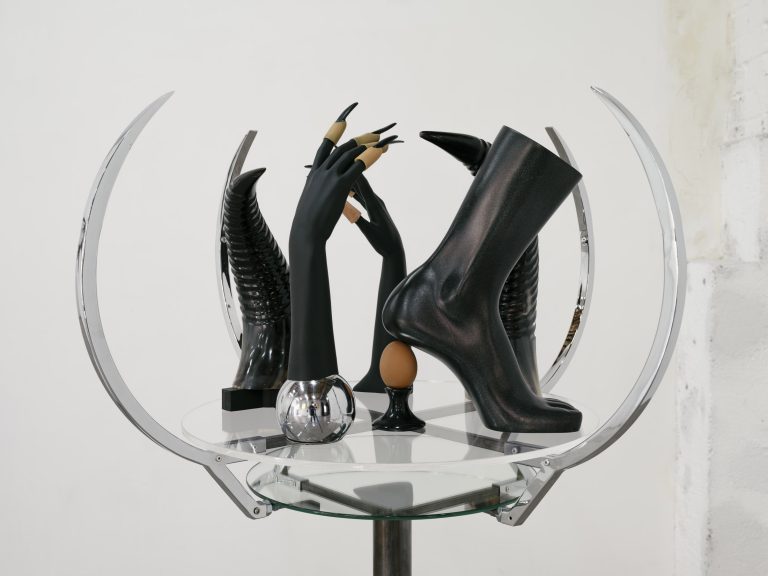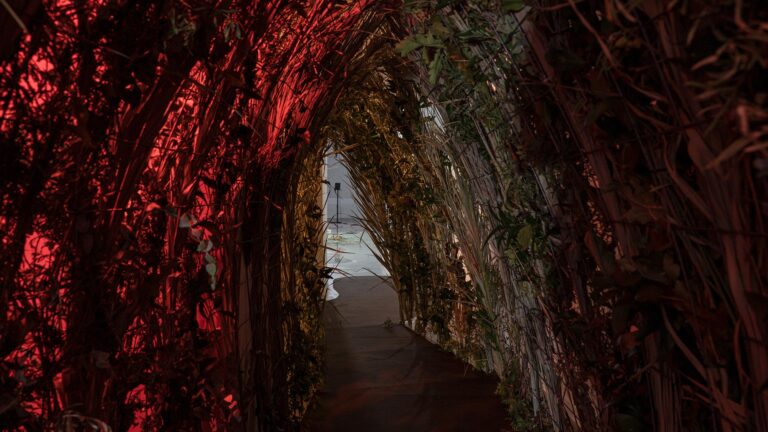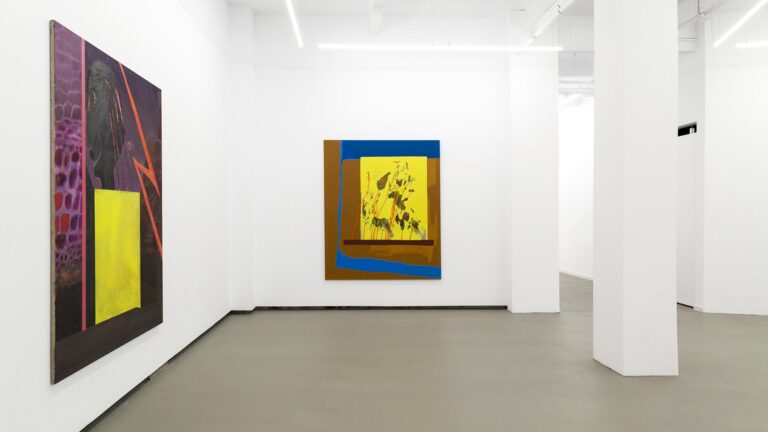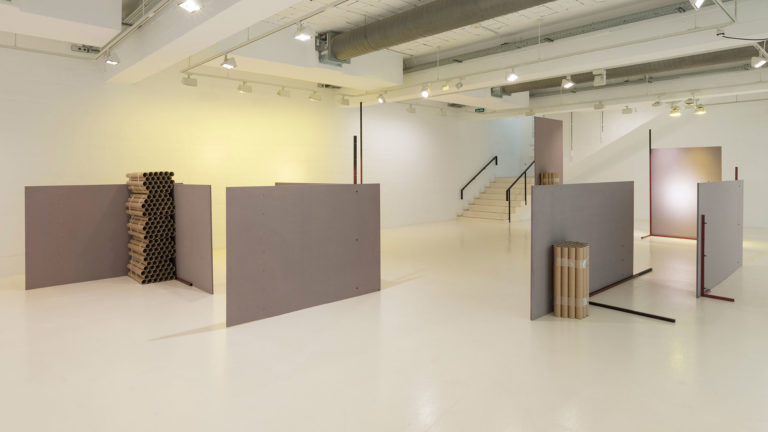Artist: David Roth
Exhibition title: Method Acting
Venue: Galería Alegría, Barcelona, Spain
Date: March 12 – April 27, 2022
Photography: all images copyright and courtesy of the artist and Galería Alegría, Barcelona
“Method Acting”, as David Roth’s exhibition at Galería Alegría is named, refers to a technique which wants to enhance an actor’s or actress’s ability of slipping into a role or enacting a part. Remembering one‘s own experiences relating to a certain role is said to be helpful for filling the depicted character with first hand experiences and feelings. Merging one’s own personality with the character represented does not only increase the role’s authenticity, but may disperse something: The viewer might no longer see that an actor/actress is not the character he or she is playing. The artist’s life could vanish behind the role or his/her compelling impersonation of this role may let us forget that it is just a performance. What becomes visible at this point is the trace left by what disappeared. A trace hints at what is no longer there, however, bearing testimony to its existence; capturing, what is merely a hint now. In the trace the vanished remains as the missing and the remaining evidence of what is lost: present and absent at once, a trace signals at what it withholds.
The process of painting means the searching for traces in several of David Roth’s paintings. When he drags a canvas through a landscape, the traces of nature and the route travelled become inscribed into the painting. His “Flower Paintings” are the imprint of those flowers he uses for painting in lieu of brushes. In these works we find solely the traces left behind yet, they extinguish what created them. Paintings, opening up to perception while at the same time hiding from it. Strokes and painterly gestures as trails connect the persisting with the perished. In this sense, they are images of time/represent time, transcending beyond the painting’s here and now. Each painting is more than its presence can reveal. The traces will only point out, that something has been caused to vanish. We see that something has become un-seeable.
David Roth’s decision to use photoluminescent paint in his artworks follows those traces. This paint contains pigments with an afterglow effect in the dark. Usually, light brings out colours, here, it is the dark that makes the paints’ (after)glow. With each work looking different in light and in darkness, one painting actually contains a pair: The appearance of one makes the other disappear and vice versa. With the light changing, one sees, something is absent, has been hidden, nevertheless as an absence remaining there: The picture turns into a trace or scent, tempting to investigate a vision, recognizing one will never see everything. Something will always evade the seeing and seeing will cloak what is seen, what we beheld, though, inextricably linked to and bringing forth the unsighted. This is the traces’ paradox: Through revealing, it keeps hidden.
On his explorations of nature David Roth tracked bark beetles, which eat their way through trees, leaving behind a trace, forming a pattern of paths carved into the wood, that looks like a drawing. A sign of death on the trees, drawn by death. Roth treats these trees as printing blocks, taking wood prints off them. The impressions preserve the tracks, Roth then transfers to wooden panels, now like the beetle (à la method acting) follows them in his woodworking, re-tracing the paths the beetles chose. This way, one trace leads to another, creating images that expose something, while also testament of something withheld, nature at the point of vanishing or turning into “nature morte”, a still life, the imprint indicating a life grown still. To pursue these trails lies in the eyes of the beholder, to see, what through seeing you cannot see (any longer).
-Andreas Spiegl


































